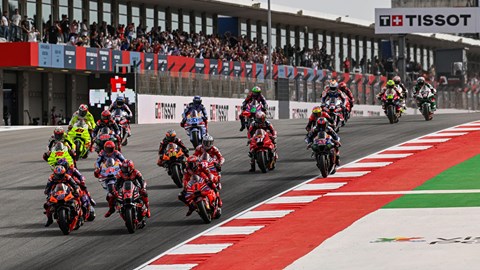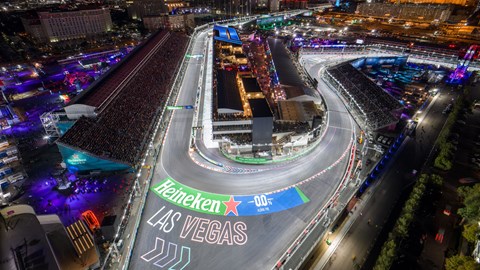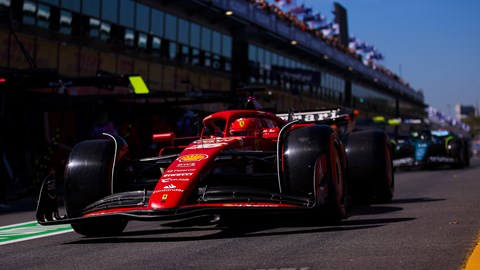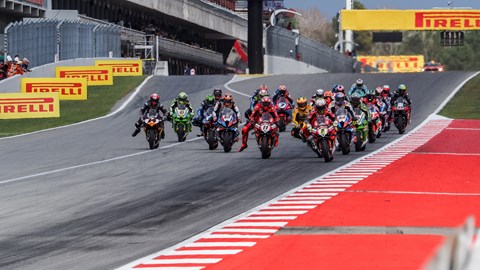► Liberty Media buys Dorna after months of rumours
► What does it mean for two-wheeled motorsport?
► Why it could be a very good thing
Liberty Media – the current owner of F1 – has bought MotoGP and WSBK (world superbikes) in a deal worth a reported £3.6 Billion. The move sees F1’s owner now own around 86% of Dorna, the group that owns both MotoGP and WSBK. The takeover should be completed by the end of this year and means the pinnacles of both two- and four-wheeled racing will sit under the same roof. They’ll be joined by the two-wheeled equivalent of the World Touring Car Championship in WSBK.
As you’d expect, the news has attracted a certain amount of apprehension from fans of two-wheel racing – but as a long-time fan of both, I think it’s a huge opportunity for both sports. Let me explain why.

Both F1 and MotoGP have very different strengths and weaknesses, and the best formula for motorsport almost certainly sits somewhere in between the two. On one side you have F1, a commercial powerhouse that has seen its value soar over recent years. On the other, you have one of the most engaging sports you can watch, handicapped by poor strategy and commercial decisions.
‘The business has significant upside, and we intend to grow the sport for MotoGP fans, teams, commercial partners and our shareholders,’ said Dorna chief executive officer Carmelo Ezpeleta on the deal. ‘We are proud of the global sport we’ve grown, and this transaction is a testament to the value of the sport today and its growth potential.’
Let’s start with F1
Increased and savvy use of social media (by the sport, as well as the teams) has seen the awareness of F1 skyrocket to reach a wider demographic than before – and it’s partly being driven by the Netflix-powered Drive to Survive series. Some long-time F1 fans may dislike the drama or the slight inaccuracy, but it’s inarguably brought a huge number of fans to F1. They’re tuning in or attending races, and they’re bringing more revenue to the sport.
Just look at the huge expansion in North America, where F1 now races in Texas, Las Vegas, Miami, Mexico City and Montreal. With Liberty Media at the helm, F1 has finally broken America.

Commercially, at least, F1 is in rude health, with teams able to attract sponsors purely thanks to the enormous reach the sport now commands. It’s why certain recent news events in the paddock must be taken seriously – F1 has a more diverse audience than before and needs to show it has more inclusive values at the top.
There are still a few hiccups on the commercial side though; some territory-based TV deals (most notably the UK contract with Sky) sit in the way of the NFL Gamepass-style business model seen in other countries – but Formula One is still open to more people than ever before.
There’s also some work to do when it comes to ticket prices, but for the casual fan at least, F1 is more accessible than it’s been in years. That’s one reason why more and more car brands are queuing up to join or rejoin the grid.

What isn’t working with F1
And then there’s the elephant in the room – and the biggest worry for F1: the quality of competition. A dodgy end to the 2021 season has been followed by two years of relatively dull domination by one driver and team, with the 2024 season poised to offer much of the same – aside from a recent Ferrari win.
Are the rules to blame? They’re certainly part of the problem, but they’re not really to do with Liberty. Instead, they’re the FIA’s problem – that’s the organisation that governs the global sport. F1’s rise and rise looks all the more impressive when you consider the often mundane racing new viewers are tuning in for.
What about MotoGP?
And what about the other side? To this fan at least, MotoGP seems to be the antithesis of Formula One in terms of on-track action: even with Ducati dominating, we’ve had incredible races for the past three years. Simply put, MotoGP does do domination – just look at the Marquez or Rossi years – but it does it in a way that’s still always entertaining. Think the 2014 to 2016 season of F1 but magnified.
Ducatis riders have given us close racing every weekend, and in 2024 other teams such as Aprilia and KTM appear to have closed the gap. Leaving the renewed hypercar series to one side, MotoGP is the perfect blend of ultimate machine, ultimate talent and ultimate spectacle right now.
There’s no clear budget cap as such, but concessions – the idea of more testing and allowances for less competitive teams – mean that the field will continue to close this year. It’s an interesting alternative to the cutting spending, which in some cases can make it impossible for teams to improve throughout the year. For example, the budget cap is a key reason why Mercedes wasn’t able to quickly overhaul its car after making some poor decisions over the winter. Anyway, I digress…
What’s MotoGP getting wrong?
For the past few years, MotoGP has tried to copy parts of F1’s success and come up short; its MotoGP Unlimited documentary on the riders hasn’t had anything like the traction of Drive to Survive, and the overall quality of presentation isn’t anywhere near what F1 does. It’s gone all in to sprint races and now has one for every round, but even the social footprint of MotoGP is tiny compared to its four-wheeled equivalent.

It’s always been a huge, missed opportunity, as MotoGP arguably has more personality than Formula One. The riders have thievery distinct styles, and the varying ways they hang off the bike and back it into corners makes it easy to tell them apart. There’s personality on every corner.
Compare that to the close-cropped shots of F1, where it’s relatively difficult (even for seasoned) fans to tell the difference between driving styles. Imagine what the Drive to Survive team could do with on- and off-track footage of personalities like Pedro Acosta, Jack Miller, Marc Marquez and Maverick Vinales, to name a few…
And then there’s WSBK, which is harder to find and watch than hen’s teeth but offers what can only be described as the best wheel-to-wheel racing on the planet right now. If you haven’t yet heard of Toprak Razgatlıoğlu, I’d urge you to watch the highlights of the Barcelona 2024 race now. In fact, I’ll embed them for you.
Imagine if action like that had the reach and the commercial backing that F1 does. MotoGP and WSBK have done the hard bit – getting the sport working and competitive – now they just need to work on the revenue and the off-track spectacle; that’s what Liberty does best.
A final thought
So that’s why this F1 and MotoGP fan thinks we’re about to get an even better MotoGP because of this deal – and maybe an even better F1 too. It’s a thought not just shared by me, but also BMW; new reports suggest BMW (already a player in WSBK) is keen on joining the top table in motorcycle racing. It seems the suits in Munich expect Liberty Media to supercharge MotoGP, just as it has F1.
One more thing: anti-competition laws mean there won’t be too much crossover when it comes to negotiating races and deals, but imagine a future where we had a calendar that evenly distributed MotoGP, F1 and WSBK. My weekends – and those of anyone close to me – would never be the same again…